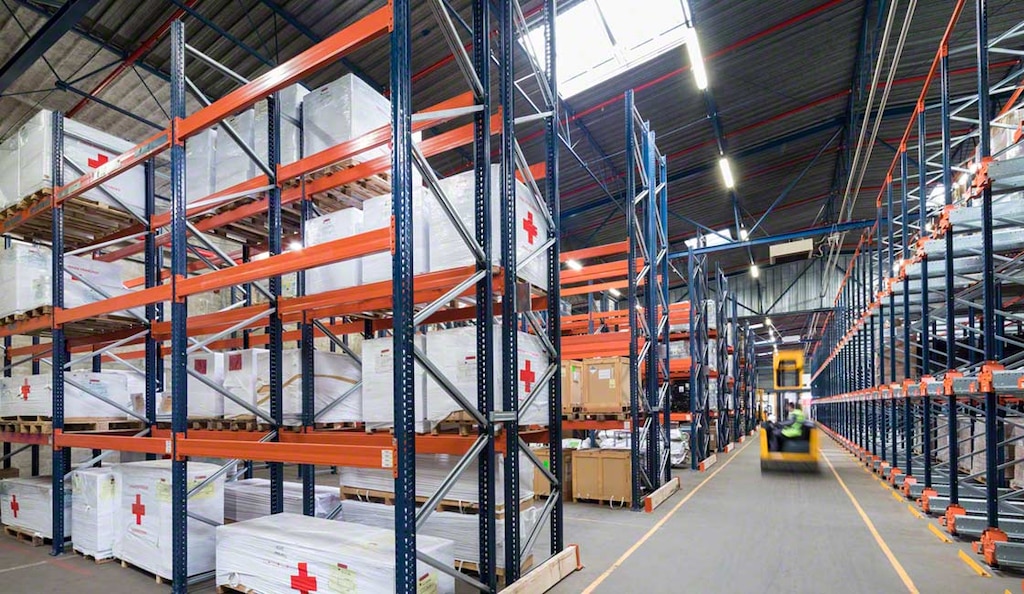
Humanitarian logistics and supply chain
When a natural disaster, pandemic, or armed conflict occurs, effective humanitarian logistics and supply chain management can help mitigate the consequences.
What is humanitarian logistics and how does it work?
Humanitarian logistics is the process of coordinating the storage, transportation, and delivery of relief resources to those affected by a disaster. It involves planning, procuring, and shipping these materials when they are needed most, transporting medical and rescue professionals, and implementing health and safety measures. It aims to cover affected individuals’ basic needs, especially food, shelter, and medical attention.
Rapid, effective deployments are crucial in humanitarian logistics: a delay of just a few hours or days could mean the difference between life and death. Humanitarian logistics isn’t limited to war zones or areas struck by natural disasters; it is also part of the daily operations of organizations and hospitals. An example is organ transplant logistics — a true race against time to save lives.
What is the difference between business and humanitarian logistics?
Although they use similar tools for execution, business and humanitarian aid logistics have different priorities and goals. Conventional logistics seeks to maximize the profitability of goods movements and meet customer demands. Humanitarian logistics, on the other hand, is often a deficit-generating activity, typically voluntary, charitable, or government-driven. Its mission is to deliver timely aid to those in need, evacuate them to safe locations, and provide food and shelter until the emergency is resolved.
Beyond their objectives, business and humanitarian logistics differ in their predictability and complexity. While customer demand can fluctuate and supply chain directors have to be prepared to address this, the response to disasters such as floods, volcanic eruptions, and armed attacks is highly unpredictable. These teams must be organized and ready to act wherever and whenever necessary.

What are the stages in humanitarian logistics?
Generally, disaster relief logistics involves three phases to provide aid as effectively and quickly as possible:
- Demand management. It’s essential to have enough resources available for any potential scenario, and they must be kept in good condition. A notable example of insufficient preparedness was during the Covid-19 pandemic, which led to a severe shortage of protective medical equipment, such as face masks.
- Aid distribution. Establishing a network to communicate what items might be needed in a disaster helps gather them more efficiently. For example, blood banks send alerts to the public when they detect a shortage of a specific blood type.
- Support plan preparation. Likewise, it’s advisable to map out rescue routes and humanitarian aid access points before an emergency happens. This ensures that professionals, food, and medicine can reach their destinations as quickly and safely as possible.
Humanitarian logistics challenges
Aid and relief logistics faces numerous hurdles in carrying out its mission. These include issues such as accessing remote areas, maintaining the cold chain, sourcing products at an affordable price, and managing customs procedures.
Economically, market fluctuations and rising prices are common during crises. They can hinder the procurement of medicines or vaccines for certain diseases. Transportation also plays a critical role in the humanitarian supply chain. For instance, in 2021, aid agencies had to chart alternative routes when one of the world’s largest ships became stranded in the Suez Canal.
Shipping costs, the need for technical and specialized personnel, and maintaining communication with those affected are additional humanitarian logistics challenges. Last but not least is safety. Operating in conflict zones can complicate the delivery of aid and the presence of medical and rescue teams.

How does the supply chain work in humanitarian logistics?
While business logistics often relies on historical data to forecast demand, humanitarian logistics frequently faces the unknown. Oftentimes, the full scope of the event only becomes clear as aid begins to reach the affected area.
As a result, humanitarian logistics requires a more reactive and flexible approach to navigate the high uncertainty and complexity of its supply chains. Therefore, these operations are usually coordinated among multiple stakeholders, including governments, NGOs, international organizations, the private sector, and even individual donors.
Best practices in humanitarian logistics
Organizations like UNHCR, the UN Refugee Agency, highlight several key actions for managing logistics during humanitarian crises:
- Improve planning. This is vital in areas with limited response capacity for crises or unforeseen events.
- Receive targeted training. Gaining knowledge in emergency response, shelter and accommodation efforts, food distribution, and human resources can be invaluable in tackling these situations.
- Secure operational areas. Teams deployed to conflict zones or natural disaster sites must adhere to established safety protocols.
- Strengthen the supply chain. To deliver the best possible response, it’s fundamental to have strategic reserves of basic necessities and enough vehicles for distribution. This often requires partnerships between various stakeholders.
Intralogistics: An ally in humanitarian logistics
Besides transportation, efficient intralogistics operations play a key role in ensuring that resources reach people in challenging circumstances faster. For example, the French Red Cross automated its warehouse in Pantin, north of Paris, to handle the large-scale inflow and outflow of essential items effectively.
If you’re looking to streamline your logistics operations, at Interlake Mecalux, we can help. Our proprietary software enhances the performance of both manual and automated warehouses, supporting the intralogistics operations of hundreds of clients daily. Be sure to contact us for advice on this and other storage solutions.
